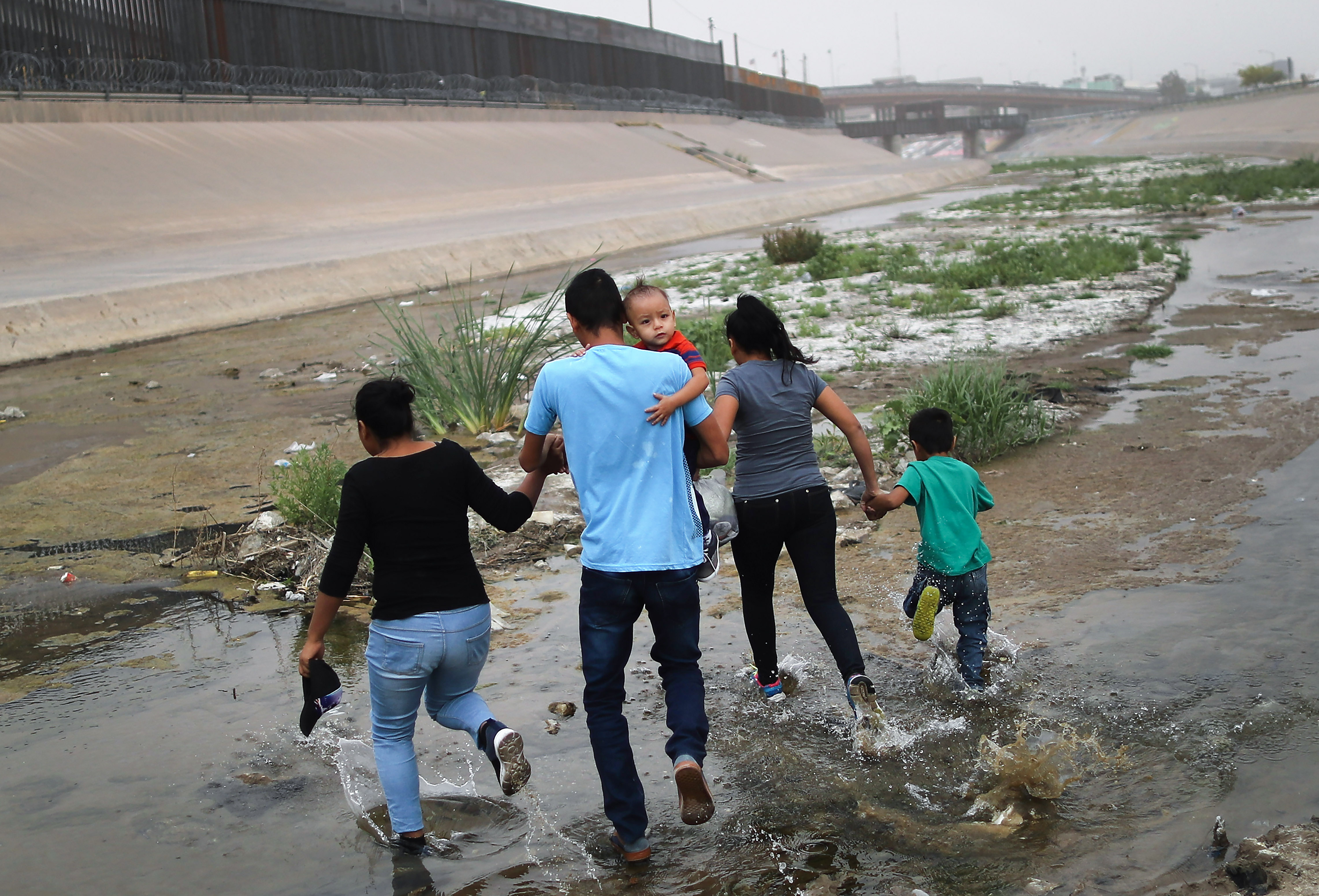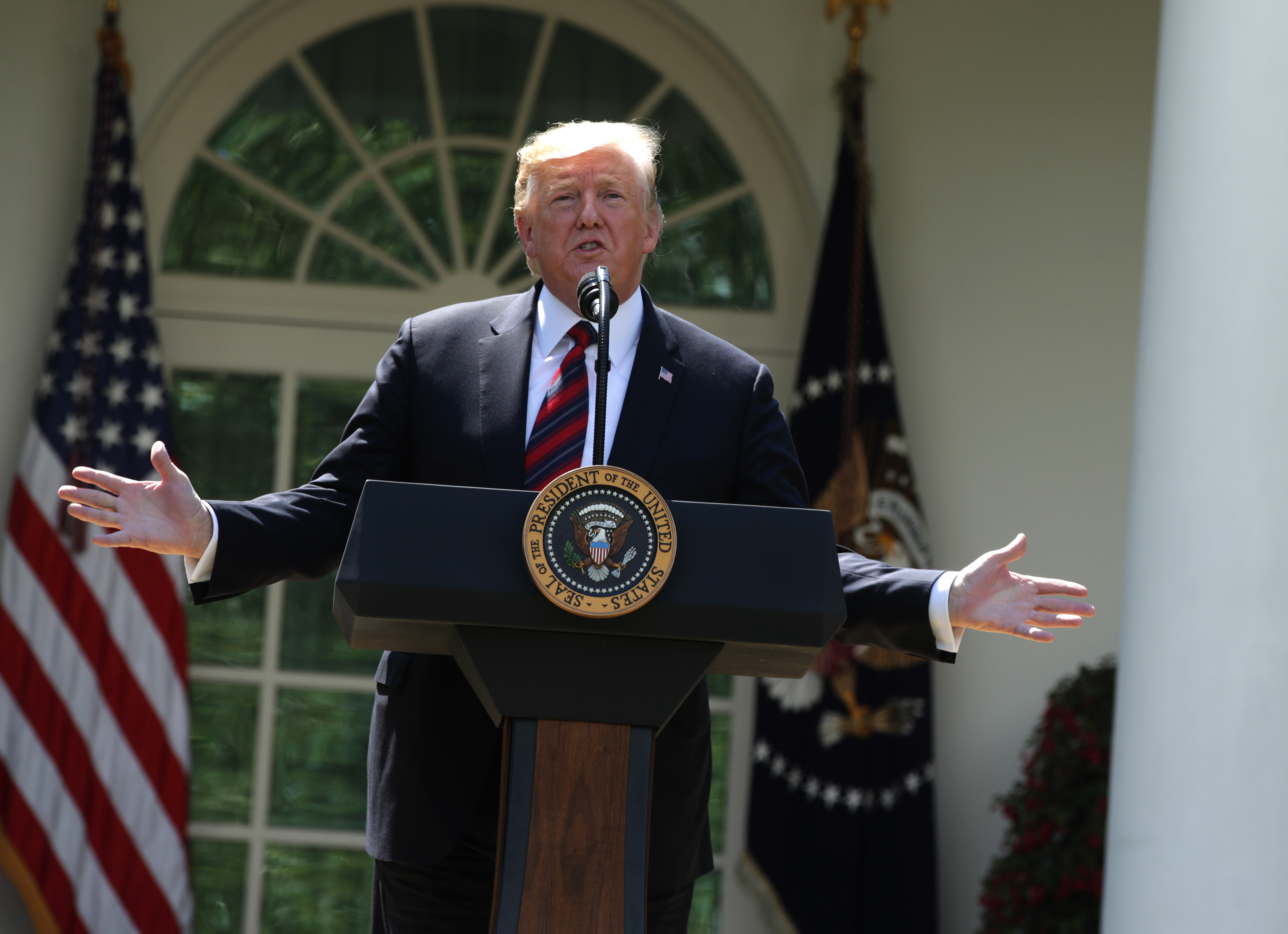President Donald Trump is expected to sign a memorandum Thursday enforcing restrictions on welfare benefits for non-citizens, The Daily Caller has learned.
The memo directs government agencies to enforce legislation signed by President Bill Clinton in 1996 that requires sponsors of immigrants to the U.S. to reimburse the government for any welfare benefits received by the person they are sponsoring.
Immigrant sponsors will be informed by agencies that they are required to pay back the money, and that they will be sent to collections if they fail to do so. Agencies will have 90 days to update their guidance and will report back to the president on their progress in 180 days.
Sponsor repayment of welfare benefits was enacted under the Illegal Immigration Reform and Immigrant Responsibility Act of 1996, but has remained largely unenforced. The bill was sponsored by Democratic Sens. Patrick Leahy and Patty Murray.
“This executive action will dramatically curb ‘welfare tourism’ and protect U.S. benefits for U.S. families,” a senior administration official told The Daily Caller. “It will also ensure that immigrant sponsors cannot continue the practice of bringing in large numbers of welfare-dependent immigrants: because they will be financially liable.”
The memo also requires enforcement of the Personal Responsibility and Work Opportunity Reconciliation Act
That act was cosponsored by then-Sen. Joe Biden and Democratic Sen. Ron Wyden.

CIUDAD JUAREZ, MEXICO – MAY 20: Migrants hold hands as they cross the border between the U.S. and Mexico at the Rio Grande river, on their way to enter El Paso, Texas, on May 20, 2019 as taken from Ciudad Juarez, Mexico. The location is in an area where migrants frequently turn themselves in and ask for asylum in the U.S. after crossing the border. Approximately 1,000 migrants per day are being released by authorities in the El Paso sector of the U.S.-Mexico border amidst a surge in asylum seekers arriving at the Southern border.
(Photo by Mario Tama/Getty Images)
The administration says enforcing these two laws will help protect welfare benefits for American citizens. According to a poll conducted by America First Policies, 73 percent of Americans support the idea that immigrants to the U.S. should be able to support themselves financially.
“This is shifting the burden away from the taxpayer and asking people to be self-sufficient,” a senior administration official told the Caller. “We have our own citizens who are struggling.”
The White House says, citing a 2015 study from the Center for Immigration Studies, that 58 percent of all households headed by a non-citizen use at least one welfare program.
President Donald Trump’s proposed immigration plan, presented to the American people last week, follows a similar theme. The plan, which revamps the legal immigration system, would give priority to immigrants who earn higher wages and are financially independent.

WASHINGTON, DC – MAY 16: U.S. President Donald Trump speaks about immigration reform in the Rose Garden of the White House on May 16, 2019 in Washington, DC. President Trump’s new immigration proposal will be a “merit-based system” that prioritizes high-skilled workers over those with family already in the country and does not address young undocumented immigrants that are part of the Deferred Action for Childhood Arrivals (DACA) program. (Photo by Alex Wong/Getty Images)
While the new immigration plan is unlikely to succeed in the Democrat-controlled Congress, the administration has been taking other executive actions to claim smaller victories on immigration reform.
“This is part of a larger effort to do what it can on it’s own,” the official said of the administration’s actions.
Attorney General Bill Barr decided in April that asylum seekers who reach the “credible fear” threshold are no longer eligible to be released on bond, meaning they could be held indefinitely while awaiting court proceedings. The move sought to curb a method that some illegal immigrants use to gain entry to the U.S. despite not having legitimate asylum claims. (RELATED: Attorney General Bill Barr Cracks Down On Catch-And-Release For Asylum Seekers)
The Department of Housing and Urban Development (HUD) is also supporting measures to make sure that illegal immigrants are not able to take advantage of public housing benefits. Current law prevents illegal immigrants from using public housing benefits, but they have been able to skirt the rules by living with American citizens who receive housing subsidies.
HUD will begin evicting families who allow illegal immigrants to live with them in government-subsidized housing.
Shortly after those two actions were revealed, the president signed a memorandum recommending sanctions on countries that have a high rate of visa overstays. The administration will place travel restrictions on countries whose residents overstay their visas in the U.S. by a rate of 10 percent or higher.
“This is part of the Trump Administration’s comprehensive approach to combating illegal immigration,” a senior administration official said at the time.


